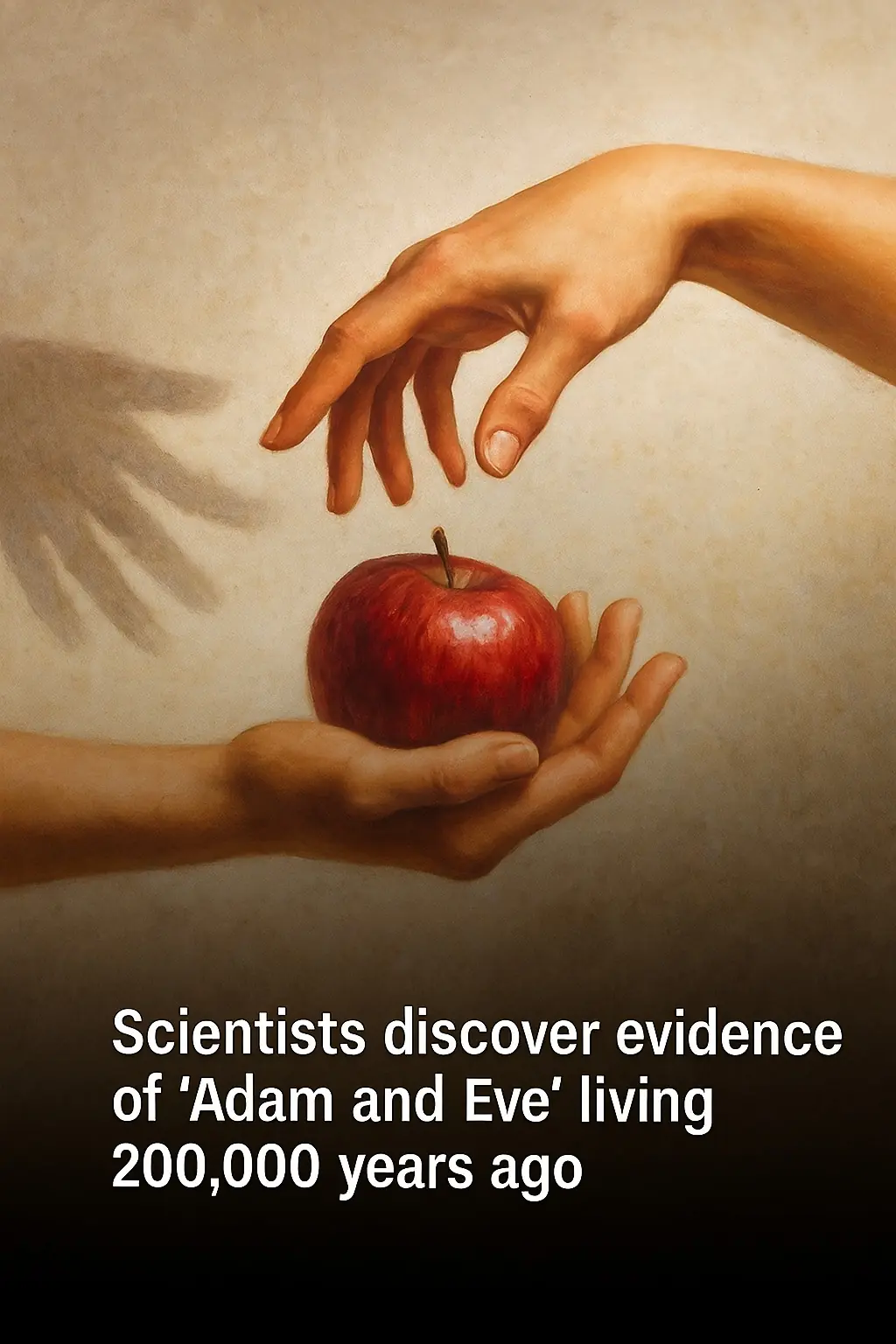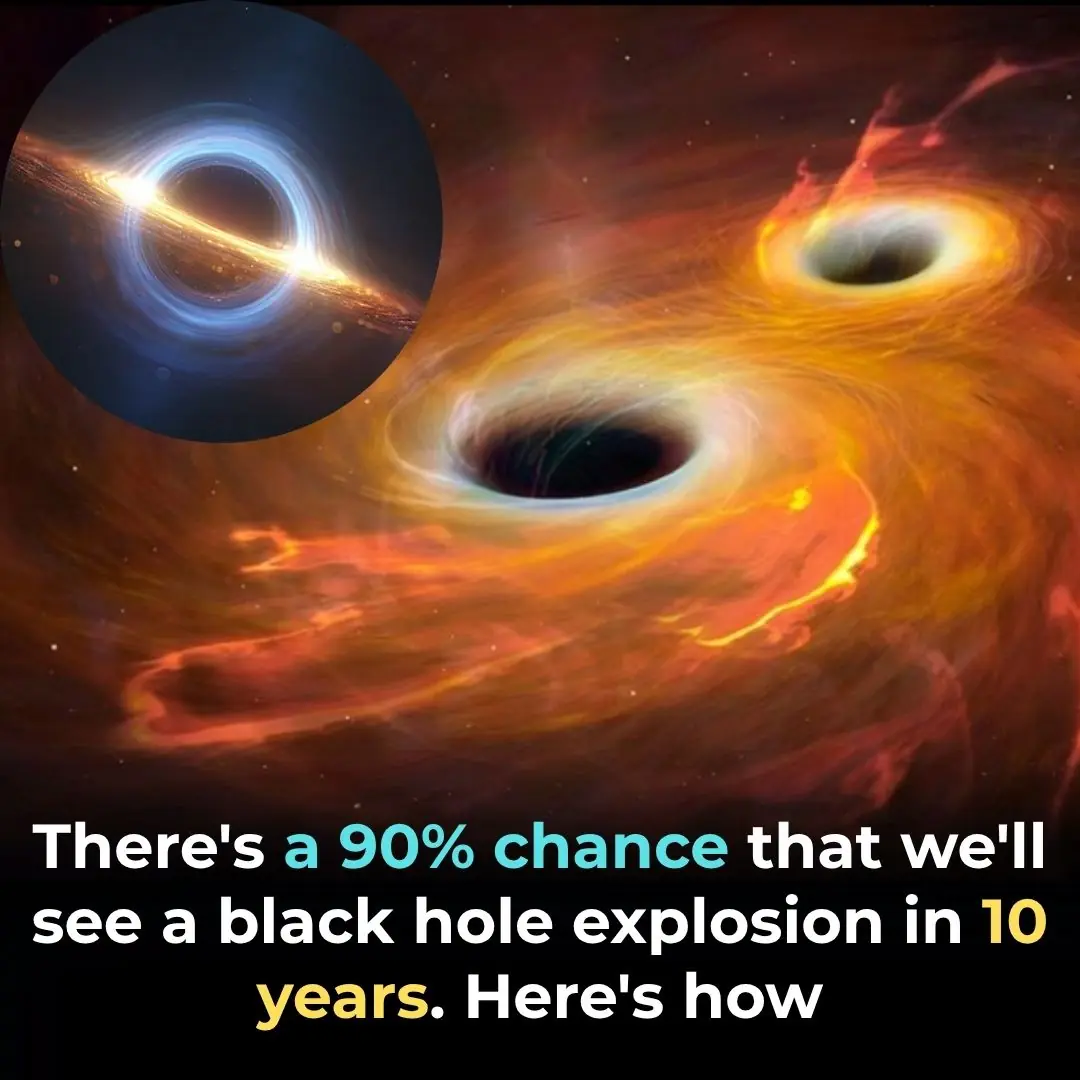
Scientists discover evidence of 'Adam and Eve' living 200,000 years ago

For centuries, the origins of humankind have been debated across religious, historical, and scientific communities. From the biblical story of Adam and Eve to the search for the earliest human species, scholars have long tried to connect ancient narratives with scientific evidence. Now, a series of recent discoveries—from genetic studies to archaeological finds—are reshaping what we know about our past and raising fascinating new possibilities.
Modern Science Reconsiders “Adam” and “Eve”
For decades, the idea of Adam and Eve as literal historical figures has been considered scientifically impossible. Early genetic models suggested that the male “Y-chromosomal Adam” and the female “mitochondrial Eve”—the most recent common ancestors for modern humans in their respective genetic lines—lived tens of thousands of years apart.
However, new research is offering a surprising twist.
A team led by Paolo Francalacci at the University of Sassari analyzed Y-chromosomes from over 1,200 men in Sardinia, discovering nearly 7,000 previously unknown genetic variations. Using this detailed molecular clock, researchers mapped important moments in history—including the arrival of Africans through the Roman slave trade. More importantly, their findings suggest that Y-chromosomal Adam lived 180,000–200,000 years ago, placing him in a similar time frame to mitochondrial Eve.
As Stanford geneticist Carlos Bustamante explains, “We’re not so much shifting Eve downward—we’re pushing Adam farther back.”
While this doesn’t confirm the biblical narrative, it does indicate that humanity’s male and female ancestral lines may be closer in time than previously believed. Other theories, including computer simulations published in Nature, have even proposed that humanity’s most recent common ancestors could be as recent as 2,000–3,000 years ago, depending on the method used.
Still, geneticists emphasize that these shared ancestors leave little or no DNA behind today. They are likely what scientists call “genetic ghosts”—individuals whose lineage connects us all, even if we’ve inherited no genetic material from them.
For many Christians, scientific confirmation isn’t essential. As discussions on faith forums suggest, many believers view the story of Eden symbolically rather than literally. Yet the scientific overlap remains an intriguing development that challenges long-standing assumptions.
A Possible Lost Civilization in Ancient Louisiana
Human origins are not only traced through DNA—they’re written in the Earth itself. In Louisiana, researchers have uncovered evidence that could support a theory of a prehistoric civilization that existed more than 13,000 years ago.
A team led by comet scientist Dr. Allan West discovered microscopic glass fragments embedded in rocks—material typically formed when extreme heat, such as that from a cosmic explosion, melts the surface of the Earth. Radiometric dating places the event at the Younger Dryas Boundary, a period marked by sudden climate shifts and extinctions.
This discovery aligns with a theory popularized by author Graham Hancock, who proposed in Magicians of the Gods that a large comet or its fragments may have destroyed an advanced Ice Age civilization in North America around 10,800 BC.
Although Hancock’s claims have been criticized, Dr. West’s findings give new scientific weight to the possibility of cosmic disasters reshaping human history. The 984-foot-long crater-like depression identified in Louisiana could be the first of many such impact sites.
According to Dr. West, these explosions—comparable in power to nuclear detonations—may have been more common than previously believed, potentially erasing entire cultures that left few physical traces behind.
New Human Species Discovered in Ethiopia
Just as scientists reevaluate the timeline of our shared ancestors, new fossil discoveries are expanding the human family tree itself.
An archaeological team from Arizona State University, working in Ethiopia’s Ledi-Geraru region, uncovered 13 fossilized hominin teeth preserved between layers of volcanic ash. The teeth appear to belong to a previously unknown species of Australopithecus—a close relative of the famous Australopithecus afarensis, the species of the well-known fossil “Lucy.”
Earlier finds in the region suggested that multiple hominin species coexisted more than three million years ago. This new discovery adds another branch to an already complex evolutionary tree.
Paleoecologist Kaye Reed, one of the lead researchers, explains:
“The image many people have of evolution—from apes to Neanderthals to modern humans—is not accurate. Evolution isn’t a straight line. It’s a bushy tree with many branches, many of which go extinct.”
Some of the newly discovered teeth may belong to one of the earliest members of the Homo genus, while others point to a species previously unknown to science. This discovery follows a 2013 breakthrough in the same region, where researchers found the oldest known Homo jawbone, dated at 2.8 million years old.
As the team continues to analyze tooth enamel and search for more fossils, they hope to uncover how these ancient species lived, interacted, and eventually vanished.
A New Era of Understanding Our Origins
Taken together, these three discoveries—the closer-than-expected timelines for genetic ancestors, evidence of a possible vanished civilization, and the identification of a new hominin species—are reshaping our understanding of where we come from.
They reveal that:
-
Human ancestry is far more interconnected than once believed
-
Our ancient world may have hosted civilizations long forgotten
-
Human evolution is not linear but a complex web of branching species
While we may never fully reconcile myth with science, each new discovery brings us a step closer to understanding the deep story of humanity—one filled with mystery, resilience, extinction, and survival.
News in the same category


The Political Science Of Ending Animal Testing In The US

These organic burial pods will turn your body into a tree after you die

Tragus Piercing What Does It Mean

💪 Sarcopenia: Why Muscle Loss Happens & How to Fight It (After 50)

Japanese scientists delete chromosome that causes down syndrome

8 Signs That Two Souls Are Connected, No Matter The Distance

Can you spot the book, egg, cup, and pillow?

Inside Sweden’s Cashless Future: Thousands Opt for Microchip Implants

When a cat rubs against you, this is what it means

Zodiac Signs Most Likely to Have Prophetic Dreams

What Your Pile of Dirty Dishes Might Really Be Saying About You

Scientists Claim Black Hole Could Explode in the Next 10 Years—with 90% Certainty

9 Signs Your Partner Is Trying To Get Closer To You That You Might Not Realize

When a cat rubs against you, this is what it means

WHAT HAPPENS WHEN WE TONGUE KISS…See more

What makes a man leave his wife for another woman

How to Hold and Handle an Urn with Ashes: 3 Things You Should Always Remember
News Post

Don't boil chicken with salt and plain water, or it will turn out fishy and reddish. Try this method for golden skin and sweet meat.

Don't throw away tea that's been left overnight: It has up to 5 amazing uses that everyone will love

The Best Tea for Mornings and After Dinner: A Powerful Blend for Health

Homemade Vitamin E Cream for Face – Vitamin E Oil benefits for Skin

DIY Rice Cream for Glowing Skin - The Ultimate Anti-Aging Moisturizer

This DIY curry leaves and lemon oil can give your hair healthy growth

Grow Date Trees From Seed (Start in a Pot → Plant Outdoors): The Complete, No-Stress Guide

Should You Place a Fan Close to or Far from the Bed While Sleeping? Many Homes Are Doing It Wrong

Simple, Cost-Free Ways to Fix Moldy or Peeling Walls — Easy Solutions for Every Home

The Incredible Benefits of Common Comfrey: Uses, Remedies, and Precautions

Why Do Fish Sellers Often Use Black Plastic Bags? A Simple Trick Few People Notice

Why Do We Burn Steel Scrub Pads Over Fire? Many People Don’t Know This Useful Trick

14 Reasons to Drink Lemon Water First Thing in the Morning

You're doing it all wrong. Here’s the right way to store potatoes

You're doing it all wrong. Here’s the right way to store tomatoes

Drink THIS every morning to BOOST leg circulation!

Preserving eggs without a refrigerator, using this method, the eggs will stay fresh for a whole month

Drop a Silver Foil Ball Into Your Toilet — The Results Are Surprisingly Brilliant
